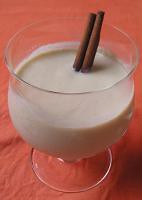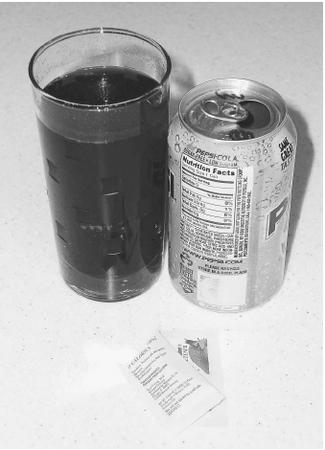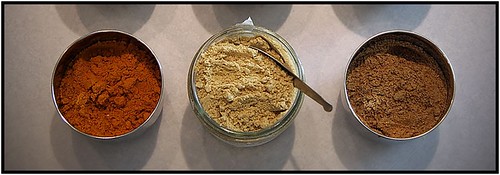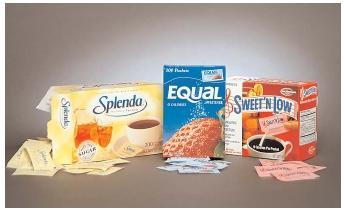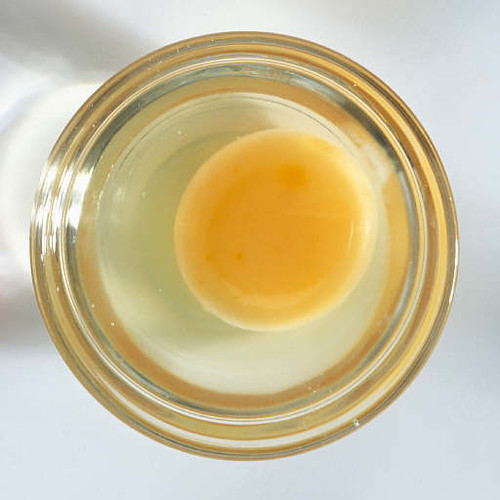
1. 1% Cottage Cheese: Berry High Protein Frozen Whip (EASY)
- Combine ½ cup cottage cheese, ½ cup frozen raspberries, and 1-2 packets of artificial sweetener in a mini food processor; process until completely smooth, 2-4 minutes eat immediately.
Nutrition: 125 Calories, 19 g protein (72% of calories), 10 g carb, 5 g fiber 1 g fat
2. Frozen Chicken Breast Tenders: Make-Believe Wings Dipped in Blue (EASY)
- Cook 10 tenders in the oven at 350 for about 20 minutes until done
- Combine in mini food processor, ¼ cup cottage cheese, ¼ cup of fat-free sour cream
and 2 Tbsp of hot sauce (or to taste)
- Cut up cooked chicken and mix with hot sauce
Serves 4
Nutrition: 146 Calories, 26 g protein (75% of calories), 3 g carb, 0 g fiber 2.5 g fat
3. Chocolate or Vanilla Whey Protein: Post work-out Dessert (EASY)
- Combine in mini food processor, 1 scoop (1 oz) chocolate whey protein, ½ banana (frozen, cut into chunks), ½ cup frozen pinapple, 1 tsp BCAA, 1 tsp creatine
- Process until completely smooth, consistency of cool whip
Nutrition: 204 Calories, 25 g protein (49% of calories), 24 g carb, 2 g fiber 2 g fat
4. Canned Tuna: High Protein, Low Fat Tuna Salad (EASY)
- Combine one can tuna, ¼ cup fat-free sour cream, and 4 wedges babybel light garlic and herb cheese
-Optional: Also add 1 chopped celery stalk and 2 Tbsp chopped onions
Nutrition: 381 Calories, 55 g protein (61% of calories), 14 g carb, 0 g fiber 9 g fat
5. Egg Substitute (Like Egg Beaters): Low- Fat Roasted Vegetable Frittata
- Roast 3 cups chopped fresh veggies: onions, mushrooms, pepper, zucchini are all good: spray cookie sheet with spray oil, place veggie in a single layer, salt, pepper, and sprinkle with balsamic vinegar and place in oven at 350 F for 30-35 minutes
- Combine one container of egg substitute (2 cups), roasted veggies, 2 Tbsp fresh
chopped basil (or 1 Tbsp dried), and ½ cup shredded 75% fat-free cheddar cheese
- Pour into small cake pan (sprayed with oil), cover with foil and bake at
350 F for about 30 minutes or until set in the middle.
Serves 4
Nutrition: 126 Calories, 17 g protein (72% of calories), 8 g carb, 1 g fiber 2.6 g fat
6. Egg Whites (Fresh): Strangely Wonderful Egg White Foam Breakfast
- Microwave 1 cup frozen strawberries until hot, stir and add ¼ tsp of ground cinnamon and 2 packets artificial sweetener
- Combine in very clean glass bowl, 3 egg whites, 1/8 tsp cream of tartar; beat white into foam with hand mixer until stiff peaks form, gently scoop into large frying pan, pre-warmed on medium heat and sprayed with oil, cover with lid (egg whites should not fill more than half the frying pan)
- Flip once bottom is set, about 1.5-2 minutes (this takes practice)
- Pour strawberry mixture over egg white and enjoy immediately
Nutrition: 95 Calories, 11 g protein (55% of calories), 12 g carb, 3 g fiber 1 g fat
7. Defatted Soy Granules: Protein-Packed Pancake
- Soak ¼ cup of soy granules in ½ cup of egg whites or egg substitutes for 5 minutes
- Add 2 Tbsp of pancake mix, 1/8 teaspoon of baking powder, and 2 tsp fresh lemon juice
- Cook like pancakes
- Top with mixture from # 6, if desired
*If soy granules are new for you, start slowly; they have LOTS of fiber!*
Nutrition: 264 Calories, 34 g protein (59% of calories), 28 g carb, 9 g fiber 2 g fat
8. Fat-Free Ricotta: For the Chocolate Chaser (EASY)
- Combine in mini food processor ½ cup fat-free ricotta, ½ tsp vanilla extract, 1 Tbsp regular cocoa, and 2 packets artificial sweetener
- Process until smooth and enjoy immediately
Nutrition: 144 Calories, 20 g protein (54% of calories), 13 g carb, 3 g fiber 3 g fat
9. 97% Lean Ground Beef: Pseudo Chili (EASY)
- Combine in large soup pot: 1 lb beef, 1 can (14 oz) fire-roasted tomatoes, 1 large jar (24 oz or thereabouts) salsa, 1 can of black beans (well-rinsed), 1 can kidney beans (well-rinsed), red pepper flakes and hot sauce to taste
- Cook for 1 hour and enjoy
Serves 4
Nutrition: 394 Calories, 40 g protein (48% of calories), 52.5 g carb, 16 g fiber 4 g fat
10. Partially Defatted Peanut Flour: Peanut Sesame Salad Dressing (EASY)
- Combine: 1 Tbsp partially defatted peanut flour, ¼ cup low-calorie sesame ginger dressing and 1 tsp sesame seeds
- Pour over high-protein salad
Nutrition: 79 Calories, 1 g protein, 4 g carb, 1 g fiber 7 g fat
Find link to my high-protein and healthy recipes
here



